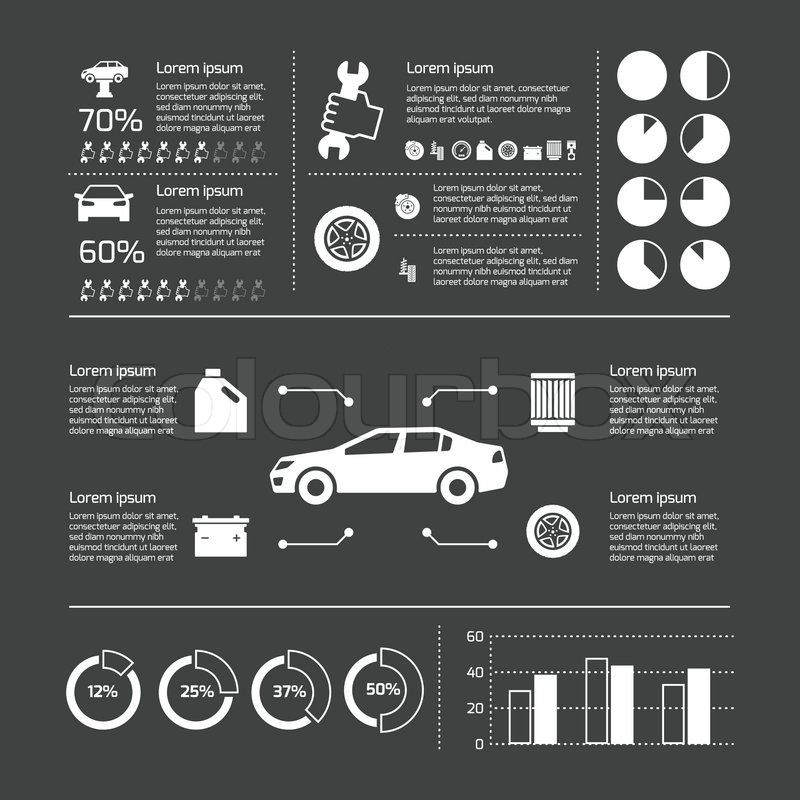Assessing Your Automobile'S Caution Indicators: What They Truly Communicate
Assessing Your Automobile'S Caution Indicators: What They Truly Communicate
Blog Article
Article By-Termansen Alvarado
When you lag the wheel, those glowing caution lights on your dashboard can be a bit perplexing. Do you recognize what they're trying to tell you about your auto's wellness? Understanding the significance of these lights is vital for your safety and the long life of your vehicle. So, the next time one of those lights appears, wouldn't you wish to analyze its message properly and take the needed actions to resolve it?
Common Warning Lights and Interpretations
Identify typical caution lights in your automobile and comprehend their significances to make sure risk-free driving.
The most regular caution lights include the check engine light, which indicates problems with the engine or emissions system. If this light comes on, it's important to have your vehicle checked immediately.
The oil pressure alerting light shows reduced oil stress, requiring instant attention to avoid engine damage.
A blinking battery light may recommend a defective billing system, potentially leaving you stranded otherwise dealt with.
view it now tracking system (TPMS) light alerts you to reduced tire pressure, impacting automobile security and gas effectiveness. Overlooking this might result in unsafe driving conditions.
The abdominal light indicates an issue with the anti-lock braking system, endangering your capacity to stop quickly in emergencies.
Lastly, the coolant temperature level warning light warns of engine overheating, which can result in extreme damages if not fixed promptly.
Recognizing these typical caution lights will aid you address problems immediately and keep secure driving problems.
Significance of Prompt Focus
Understanding the common caution lights in your vehicle is only the very first step; the relevance of immediately addressing these cautions can't be emphasized sufficient to ensure your safety when driving.
When a caution light illuminates on your dashboard, it's your auto's method of connecting a prospective concern that requires interest. Overlooking these cautions can cause much more severe troubles down the road, endangering your safety and security and potentially costing you more out of commission.
Motivate attention to alerting lights can stop failures and accidents. As an example, a flashing check engine light might show a misfire that, if left unattended, might cause damage to the catalytic converter. Addressing this immediately can save you from a costly repair.
Similarly, a brake system cautioning light may indicate low brake fluid or worn brake pads, critical parts for your safety when driving.
Do It Yourself Troubleshooting Tips
If you discover a caution light on your dashboard, there are a few do it yourself repairing suggestions you can attempt prior to looking for professional assistance.
The primary step is to consult your auto's manual to understand what the certain caution light suggests. Sometimes the issue can be as easy as a loose gas cap triggering the check engine light. Tightening up the gas cap might resolve the issue.
Another typical concern is a low battery, which can trigger different advising lights. Examining https://riverjournalonline.com/around-town/award-winning-auto-repair-shop-expands-to-shrub-oak/26132/ for deterioration and ensuring they're safe may deal with the problem.
If a warning light persists, you can try resetting it by separating the vehicle's battery for a couple of minutes and then reconnecting it. Additionally, examining your car's fluid levels, such as oil, coolant, and brake liquid, can aid fix cautioning lights related to these systems.
Conclusion
To conclude, comprehending your cars and truck's caution lights is essential for keeping your lorry running efficiently and safely. By quickly dealing with these signals and knowing what they indicate, you can avoid costly fixings and prospective malfunctions.
Remember to consult your auto's guidebook for certain details on each alerting light and take action accordingly to ensure a trouble-free driving experience.
Stay educated, stay risk-free when traveling!
